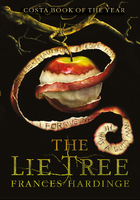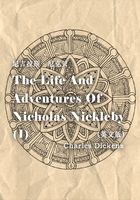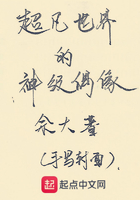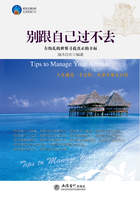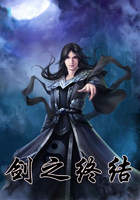This is a man-bites-dog story. Americans eat twenty billion hot dogs a year, which works out to sixty sausages per citizen. Or so says the National Hot Dog and Sausage Council, a wiener advocacy group whose raw data (which also come grilled) project that twenty-six million franks will be consumed this season in the twenty-eight Major League Baseball parks alone. Laid end to end, those dogs would stretch from Baltimore to Los Angeles, a sausage superhighway. Come follow its yellow center line: a trail of ballpark mustard dispensed from a flatulent squeeze bottle.
The road winds past Cooper Stadium in Columbus, Ohio, where the Triple A Clippers host gluttonous Dime-a-Dog nights. On April 15, 3,395 paying customers at Cooper ate 21,365 Oscar Mayer wieners, a frank-to-fan ratio of more than six to one. Given that some spectators abstained, one has to wonder …
"I've had people say they ate fifteen to twenty dogs," says the Clippers' general manager, whose name is Ken Schnacke. (Of course it is.) He quickly adds, "We've never had anybody get ridiculously sick and be taken to the hospital to have his stomach pumped." But as baseball fans everywhere know, there's always next year.
The point is, Americans certainly ken schnacke, and in few places do they snack more heavily than at baseball parks. The reasons for this are manifold and, in the view of some experts, quite complex. "Sports are a primitive ritual of aggression and release—the id hangs out," Psychology Today editor Hara Estroff Marano once told New York Times food writer Molly O'Neill, whose brother Paul plays right field for the New York Yankees. "In such a situation, the primitive part of the brain, 'Me want hot dog,' overrides the restraints of the more rational part of the brain, which would say, 'Am I hungry?' or 'Would I like a hot dog?'"
Tell Boog Powell that his id hangs out, and he's apt to check his fly. The former first baseman for the Baltimore Orioles knows only that food tastes better at the ballpark and that every time the O's played in Milwaukee, his brain said, "Me want bratwurst." So between at bats, he would dispatch a clubhouse attendant to the stands to procure a pair of sausages slathered in red sauce, later to be immortalized as Secret Stadium Sauce. Standing in the tunnel behind the dugout, Boog would down those brats in a violent trice, as if feeding timber to a wood chipper. "Then I'd walk to the plate with red sauce all down the front of my uniform," he recalls. "I'd tell the manager, 'I'm bleeding like a stuck pig!'"
A giant man who bleeds condiments, Powell embodies the bond between baseball and food, an association "as strong as the movies and popcorn," according to sports sociologist Bob Brustad of the University of Northern Colorado. In fact the sports–food bond is stronger. When an ad man tried to encapsulate America for his automaker client, he wrote, "Baseball, hot dogs, apple pie, and Chevrolet," front-loading the jingle with the two most surefire evocations of American culture.
And you thought American culture was an oxymoron. "Of course there is American culture," says Allen Guttmann, a professor of American studies at Amherst. "It includes symphonies as well as jazz, literature as well as comic books." And at its apex are what Bob Dole calls "America's greatest diversions: sports and food."
If that description rings with American decadence—you can bet Bangladeshi leaders don't call food a diversion—it happens to be accurate. What is more diverting than eating a chocolate sundae from an inverted miniature batting helmet while watching other people work? What, for that matter, is more decadent?
Of all sports, baseball most vigorously stirs the appetite. Because of the game's unhurried pace and frequent lulls, baseball fans tend to make more trips to the concessions stands than football, basketball, or hockey crowds. In those last three sports, "food sales are driven by intermissions," notes Michael F. Thompson, president of Sportservice, which supplies seven Major League ballparks. "Baseball games are a constant, leisurely grazing period."
In that spirit we invite you to graze.
Just as baseball's birthplace is disputed, sausage, too, comes encased in controversy. Who conjoined the ballpark and the frank? Was it St. Louis saloonkeeper Chris von der Ahe, who owned the Browns baseball club and brought sausages to Sportsman's Park near the turn of the century to serve as sop for his popular beer? Or was it Harry M. Stevens, a former bookseller who in 1901 began to sell ten-cent "dachshund" sausages at the Polo Grounds in New York City? This much is clear: When cartoonist Tad Dorgan captured the Polo Grounds scene for the New York Evening Journal that year, his caption shortened the vendors' pitch—"Get your red hot dachshunds!"—to the snappier "hot dogs!"
Still, one hopes the von der Ahe–Stevens matter is adjudicated at the next meeting of the National Hot Dog and Sausage Council, whose members rule on the world's wiener-related controversies and are responsible, one suspects, for the diabolical fact that hot dogs are sold in packs of ten, while hot dog buns come in packs of eight.
In the hypercompetitive world of ballpark concessionaires, it really is the size of the dog in the fight, and not the size of the fight in the dog, that matters. "Ten to one" is food-service shorthand meaning ten hot dogs will be produced from every pound of beef, pork, or poultry. A ten-to-one frank is common in the industry, though baseball's dogs tend to skew bigger. Volume Services sells a zeppelinesque two-to-one, or half pound, hot dog in Kansas City and Minneapolis. In Kansas City it is called the King Colossal (in Minneapolis, the Jumbo Dog), and it's the biggest dog in the majors now that Vince Coleman is in the minors. In short, the lower the ratio, the larger the sausage, which means these numbers also serve handily as odds that a given hot dog will kill you.
"One pig-out is not significant," says Patricia Hausman, author of seven books on diet and nutrition, refusing to rain-delay our parade. "But I think people have to ask themselves, Is what I eat at the ball game representative of what I eat all the time? If so, then they've got a real issue on their hands." With that in mind, many stadiums now serve kosher franks, whose ingredients have been blessed by a rabbi. San Francisco's 3Com Park even offers something called a tofu dog. Tofu apparently derives from toenail fungus, but the product's very inedibility ensures against ill effects on one's health.
Kosher and tofu franks are but two of the myriad new offerings from Major League Baseball's four principal concessionaires: Aramark, Ogden, Sportservice, and Volume Services. Big league teams gross tens of millions of dollars a year from food sales, so a popular new item, such as nachos, the surprise hit of the last fifteen years at Major League parks, can be more valuable to a franchise than a good left-handed reliever.
Like baseball itself, concessions companies keep sophisticated statistics. "White Sox fans tend to buy more apparel," says Aramark's Bernhard Kloppenburg, who runs the food and merchandise business at Camden Yards in Baltimore. "Yankee fans tend to drink more beer." Kloppenburg proudly points out that the Orioles' Cal Ripken Jr. wasn't the only record breaker at Camden Yards last September 6, the night he surpassed Lou Gehrig's total of consecutive games played. Aramark did an absurd $40 per fan in sales that evening, to the delight of Fancy Clancy and the Terminator, local beer hawkers whose sales totals can earn them a chance to work the All-Star Game and other big events.
Vendors and other ballpark food workers occupy their own subculture. Some seem born for the job—the wearer of beer-vendor badge number 0003 at Coors Field in Denver is named Eric Beerman—and all use a lingua franca that is unintelligible to outsiders. Say the words "mother Merco," for instance, and they'll know that you're talking about the most essential of concessions-stand appliances. It is the plastic-front wiener grill that allows patrons filing past to view rows of hot dogs in repose, much as citizens of the former Soviet Union once filed past the embalmed body of Lenin in Moscow's Red Square. The difference, of course, is that mother Merco's pilgrims come to stuff themselves.
Los Angeles has baseball's best-known dog-and-kraut combo, if you no longer count Schottzie and Marge. "Nothing is as famous as the Dodger Dog," notes Lon Rosenberg, Aramark's general manager at Dodger Stadium, and this is as it should be, for L.A. gave the world the hot dog–shaped building (see Tail 'O' the Pup on San Vicente Boulevard) and frankophile movie stars: Marlene Dietrich's favorite meal was hot dogs and champagne, while Humphrey Bogart once said, "A hot dog at the game beats roast beef at the Ritz." You can just hear him, can't you?
The Dodger Dog's nearest rival is three thousand miles away in Boston, where the Fenway Frank generally cuts the mustard with the most discerning of critics. "The dog was very good," says TV gourmand Julia Child, recalling a Fenway Frank she recently digested. "But the bun was wet and soggy."
In an unrelated bun-related incident, two former concessions-stand workers at the Kingdome told the Seattle Times in March that they had been instructed to pick the mold off hot dog rolls before serving them to the public. The story is credible because the Kingdome's concessions stands, run by Ogden, have been cited 158 times in the last three years by the Seattle–King County Department of Public Health for ominous-sounding "red critical" food-safety violations.
Yet hot dogs continue to dominate ballpark food sales. King Colossal indeed. "You'll find there are still six major food groups," says Thompson of Sportservice. "There's a sausage product—tube steak, as it's called in some places; popcorn; soda or beer; nachos; peanuts; and malts and frozen things."
In this last category is the Dove Bar, which is giving some stiff competition to the frosty malt as the frozen thing of choice in many ballparks. The frosty malt, you might recall, is a cup of chocolate-malt-flavored ice cream that comes with a flimsy three-inch tongue depressor that its manufacturers quaintly call a spoon. If the Dove Bar should displace the frosty malt, it would be the death knell for yet another baseball tradition. As Thompson concedes, "You can't throw the lid of a Dove Bar," Frisbee-like, from the second deck of a stadium.
What price progress?
For the better part of this century, ballpark cuisine comprised the few, unwavering aforementioned staples. That all changed with the advent of nachos: tortilla chips submerged in something called "cheez," an orange substance with the viscosity and thermal breakdown of forty-weight Pennzoil. People lapped it up, often literally.
Nonexistent in ballparks circa 1980, nachos now account for 8 percent of all food sales in stadiums served by Sportservice. "Nachos were introduced in the theme restaurants, like Friday's," says Aramark's Kloppenburg. "Then they came to the ballparks."
Things would never be the same. Before the decade was out, the door was thrown open to other arrivistes, including Dove Bars, Dunkin' Donuts, and Pizza Hut. Buy me some peanuts and Cracker Jack? "With Cracker Jack, you find young kids don't enjoy it much," says Thompson. "They have gone to the Crunch 'n Munch." In what may be a final act of desperation, some Cracker Jack boxes carry a banner that says FAT FREE, the nineties equivalent of A PRIZE IN EVERY PACKAGE.
According to Sportservice, the number of women attending Major League games has tripled, to more than 35 percent, in the past ten years, expediting an explosion of light ballpark food, such as salads, pasta, and Fat Free Cracker Jack. The age and affluence of baseball fans—most customers at Camden Yards are between thirty-one and forty years old, with an annual income of at least $50,000—have also pushed the trend toward yuppier fare, such as boutique beers. 3Com Park serves twenty bottled brands at one stand alone, including Oregon Berry Brew, which tastes like cherry Robitussin but doesn't provide the pleasant buzz you get from the cough syrup.
In addition most stadiums serve some sort of regional cuisine: Cuban sandwiches in Miami, cheese coneys in Cincinnati, clam chowder in Boston, barbecued brisket in Texas, indigenous seafood in Denver, and Maryland crab cakes in Baltimore.
Crab cakes were on the menu in Orioles owner Peter Angelos's luxury box at Camden Yards on April 2 when President Clinton threw out the first pitch to open the season. So were fresh fruits, crudites, and other foods so extraordinary at a ballpark that the collective spread impressed even the president's jaded entourage. "They were saying they'd never seen anything like it," recalls Michelle Milani, the luxury box attendant that afternoon.
"Uh, Michelle?" asked the president, surveying the spread as the game got under way. "Can I just have … nachos?" A platter was summoned, and Clinton inhaled it as if he were a Hoover upright. "And he had some shelled peanuts," says Milani.
Adds Zachary Henderson, the stadium's executive sous-chef: "I believe he also had a shrimp cocktail …"
Says Milani, "And hot dogs …"
Well, you get the idea.
Baltimore is the city that gave us Babe Ruth, who once ate a dozen hot dogs between games of a doubleheader. In terms of local legend, Babe begat Boog, whose favorite ballpark food is barbecue. Hang around him long enough and you learn, that barbecue is not just a verb. Barbecue is not just a noun. "Barbecue," says Boog, "is an attitude."
Back when the Minnesota Twins played their home games at Metropolitan Stadium in Bloomington, Boog often didn't get out of the parking lot. "I used to leave that park after a weekend day game and never make it to the hotel," he says. "Those people could tailgate. You'd sit down, have a couple of beers, the grill is going, and the next thing you know, they're saying, 'Hey, it's late, you might as well stay here.'" And Boog would crash in his newfound friends' Winnebago, a mobile home away from home.
Boog's has always been a barbecue state of mind. In Baltimore he couldn't wait to return home after Sunday afternoon games and "fire up the barbecue." This was easy to do because he lived in a row house behind Memorial Stadium, where the Orioles played in those days. "Hell, I'd grill after night games," he says. "Fire it up at eleven o'clock, smoke is pouring in the neighbors' windows, their heads are popping out, and they're yelling, 'We know you don't have to work in the morning, but the rest of us do.'
"Hell," Boog replied, "if I had to work in the morning, I wouldn't be out here." Freed of the burdens of ballplaying after seventeen years in the big leagues, Boog now practices the full barbecue lifestyle, drinking beer professionally as a pitchman for Miller and overseeing Boog's barbecue stand beyond the right-field bleachers at Camden Yards. The stand grosses $2 million a year, and so popular is its proprietor that Orioles manager Davey Johnson once told him, "You could sell these people a dog shit sandwich, they'd buy it."
Boog knows better than that. What draws the crowds to his stand is the barbecue attitude. "It's a smile," he says. "It's the smell." It's the secret sauce, and the sun, and a story or a signature from Boog himself. It's the sound of baseball beyond the bleacher wall behind Boog, who has a hundred beer-buzzed patrons in his line and three Weber grills cooking up fifteen hundred pounds of beef, pork, and turkey a night and sending smoke to the blue heavens.
Fans call his name with an easy familiarity. They're not booing, they're Booging. At this moment he looks more than enormous. He looks enormously content. Boog Powell and all those around him are feeling very barbecue indeed.
(July 8, 1996)


